MENU

Heavy-Duty
California has more than 500,000 medium- and heavy-duty diesel trucks and buses - mostly commercial. Diesel engines are durable and economical sources of power. But, unless they contain the newer EPA mandated tighter emissions controls, they are significantly more toxic than gasoline engines, emitting many pollutants including particulate matter (commonly known as soot), nitrogen oxides (NOX), and sulfur dioxide (SO2). See What's in Diesel Exhaust? below and visit the Idling Facts page to learn more about the health impact of diesel exhaust.
Medium- and heavy-duty vehicles, most equipped with diesel engines, rarely need to idle for extended periods. Reducing idling yields benefits in avoiding fuel use and engine wear that increase the profits of individual drivers and company fleets (or taxpayer dollars saved for municipal fleets), improve health, conserve energy, mitigate climate change, and comply with California state idling restriction laws and client rules.
Cost of extended idling
While there are some legitimate reasons trucks and buses need to idle, in many cases excessive idling can be avoided. Even with recent lower fuel costs, it makes sense to shut engines off. Idling gets negative miles to the gallon. Profits are at stake for individual drivers and company fleets, and taxpayer dollars for municipal fleets. A heavy-duty vehicle burns about one gallon an hour. Two hours a day, with diesel at $3.75/gal. can cost more than $1,950 annually (260 day year); a 25 truck heavy-duty fleet brings that to around $48,750.
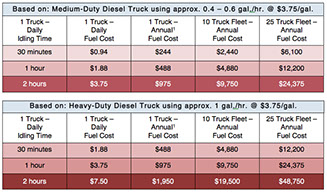
Engine manufacturers
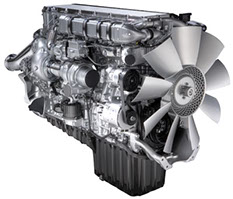
Engine manufacturers recommend avoiding excessive idling
• Caterpillar Inc. "How much is idle time costing you"
• Caterpillar Global On-Highway representative states, "There is no additional wear when shutting the truck on/off several times a day."
• Cummins Inc. MPG Guide states, "...avoid unnecessary engine idling."
• Volvo U.S. 2012 operators manual: "The belief that idling a diesel engine causes no engine damage is wrong."
• Detroit Diesel “Optimizing driver habits alone can improve fuel economy by up to 30%”.
• IC Corporation's engine manual states that "...Excessive idling reduces fuel economy, and may decrease oil life."
• Kenworth Truck Co. representative states, "Starting and stopping the engine is actually easier on the engine than prolonged idling."
• Navistar/International Trucks: "When a truck is stopped and idling, it is achieving zero miles per gallon."
Idling and Regens
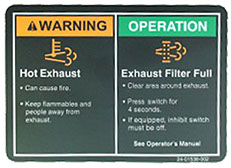
To meet EPA emissions standards, newer trucks come equipped with emissions controls making them up to 90% cleaner than older diesels. This includes a diesel particulate filter (DPF) which must be regenerated to keep doing its job.
Under normal duty cycles, DPF regeneration occurs passively or automatically while the vehicle is driven, and the driver doesn’t do anything differently. To minimize fuel wasting parked regens, operate the vehicle as it was designed: normal duty cycles whenever possible, and minimizing idling. The more idling, the more parked regens required.
What's in diesel exhaust?
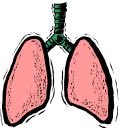
• Particulate Matter – [PM]: Linked to cancer, respiratory disease, cardiovascular disease and increased respiratory illness in children and the elderly.
• Nitrogen Oxides – [NOX]: Linked to problems such as shortness of breath, asthma, respiratory disease and decreased lung function.
• Carbon Monoxide – [CO]: Reduces the flow of oxygen in the bloodstream and is of particular concern to those with cardiovascular disease.
• Sulfur Dioxide – [SO2]: Irritates the nose, throat, and airways to cause coughing, wheezing, shortness of breath, or a tight feeling around the chest.
California idling law

There are laws in California (and other states) that limit the idling of motor vehicles.
• California Commercial Vehicle Idling Regulation limits the idling of heavy-duty diesel vehicles with a Gross Vehicle Weight Rating (GVWR) of 10,001 lbs. or more. Idling for more than 5 minutes is prohibited within California’s borders.
• California School Bus Idling and Idling at Schools Regulation limits idling of school buses, school pupil activity buses, youth buses, paratransit vehicles, transit buses, and heavy-duty commercial motor vehicles (with gross vehicle weight rating (GVWR) of 10,001 lbs. or more) that operate at or near schools.
Idle Reduction Technologies
IDLING REDUCTION TECHNOLOGIES (EPA Smartway compilation):
• Auxiliary Power Units and Generator Sets (APU/GS)
• Fuel Operated Heaters (FOH) aka Direct Fired Heaters (DFH)
• Battery Air Conditioning Systems (BAC) (Battery operated heating and/or cooling system)
• Thermal Storage Systems (TSS)
• Electrified Parking Spaces (EPS) / Truck Stop Electrification (TSE)
FUEL MANAGEMENT SYSTEMS
Fleet idle reduction policy
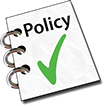
A real win for businesses is to adopt a formal, written policy or practice that spells out green driving practices including idling reduction and eco-driving. Not only do drivers and operators better comply with an official measure, but the company's social responsibility and "green" image is enhanced. And, of course, the resulting avoidance in fuel use and engine wear leads to increased profit. For municipal fleets, residents will appreciate knowing that their town employees are saving taxpayer dollars, improving health, conserving energy and lessening the town's/city's carbon footprint. Fleet Idle Reduction Policy Template.
WHAT CAN BROWN DO FOR YOU?
From UPS 2015 Corporate Sustainability Report: "The use of telematics in our U.S. and international operations enabled us to avoid 287 million minutes of idling time in 2015, equivalent to 2 million
gallons of fuel and 19,000 metric tonnes of CO2." (page 81)